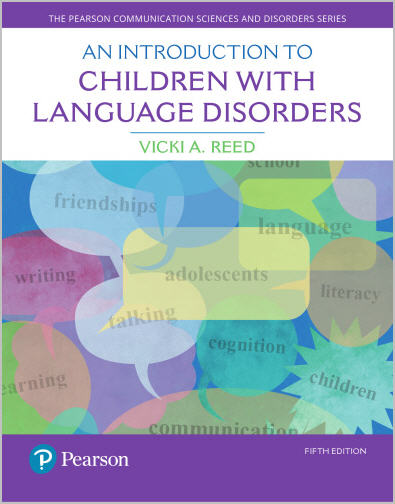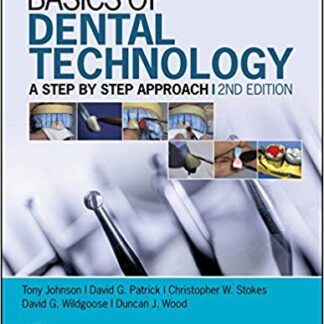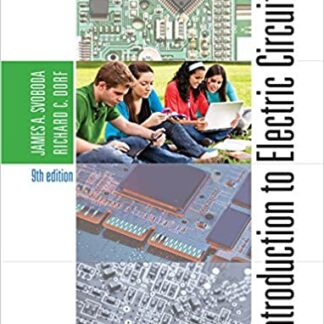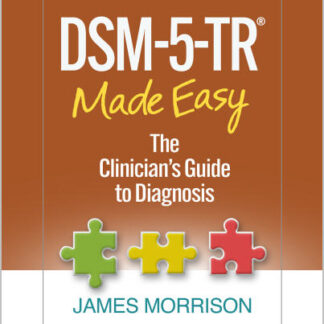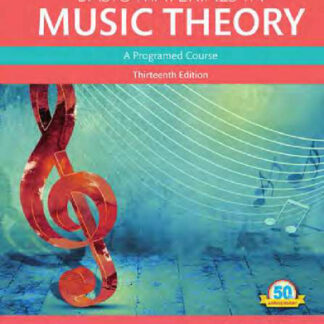Description
An Introduction to Children with Language Disorders 5th Edition by Vicki A. Reed, ISBN-13: 978-0133827095
[PDF eBook eTextbook] – Available Instantly
- Publisher : Pearson; 5th edition (May 30, 2017)
- Language : English
- 576 pages
- ISBN-10 : 9780133827095
- ISBN-13 : 978-0133827095
NOTE: This eBook is a standalone eBook and will not include any access codes.
A comprehensive look at the various groups of children that professionals encounter in their work according to diagnostic categories, the unique issues that relate to those diagnostic categories, and approaches to effective assessment and intervention.
This book provides comprehensive coverage of children who do not acquire language normally, their characteristics, and how to help them successfully develop language skills. It begins with an overview of the aspects of normal language, looking at the bases of language and communication and at normal language development in children and adolescents. Here readers get a review of the concepts, as well as an introduction to the rest of the book.
The central focus of the book features nine chapters on the language difficulties of different groups of children, including groups defined by the age of the children in combination with an etiological condition, and groups defined by concomitant or etiological conditions associated with the children’s language difficulties. The final part of the text presents more detailed discussions of language intervention, including augmentative and alternative communication as it relates to children with language disorders and their interventions; language assessment; and the procedures used and factors considered in intervention with children with language disorders. Thoroughly updated to reflect the most current knowledge in the field, the new edition also includes current information about federal education laws and initiatives that affect services for children with language disorders.
Table of Contents:
Contents
Preface
Overview of the Book
New to this Edition
Part 1 Aspects of Normal Language and Communication
1 Language and Human Communication An Overview
Learning Objectives
Communication
Language
Speech
Extralinguistic Aspects of Communication
Paralinguistics
Nonlinguistics (Nonverbal Communication)
Metalinguistics
A Bit More about the Relationships among Speech, Language, and Communication
Components of Language
Phonology
Semantics
Syntax
Morphology
Pragmatics
Comprehension and Production
Communication Modes
Auditory–Oral System: Hearing and Speech
Visual–Graphic System: Reading and Writing
Visual–Gestural Systems
Manual Communication
Augmentative/Alternative Communication
Biological, Cognitive, and Social Bases of Human Communication
Biological Bases of Communication
Hearing and Listening
Basic Anatomy and Physiology of the Ear
Biological Basis for Listening to Speech
Speech and Talking
Basic Anatomy and Physiology of the Speech Mechanism
Biological Basis for Speech Production
The Controller and Interpreter: The Nervous System
Basic Anatomy and Physiology of the Nervous System
The Central Nervous System
The Peripheral Nervous System
Neurological Basis for Human Communication
Cognitive Bases of Language
What Is Cognition?
The Relationship between Cognition and Language
Dependency of Language on Cognition
Language and Cognition as Separate (but Sometimes Related) Entities
Language Mediation of Cognition
Information Processing
Metacognition
Social Bases of Human Communication
Infant–Caregiver Attachment
Infant–Caregiver Interaction
Infant Behaviors during Infant–Caregiver Interactions
Caregiver Behaviors and Language during Infant–Caregiver Interactions
Infant–Caregiver Interactions and Language Disorders: A Possible Link?
Imitation and Reinforcement
Summary
2 Normal Language Development A Review
Learning Objectives
The Prelinguistic Period: The First 12 Months
Prelinguistic Communication Development
Prelinguistic Vocal Development
Stage 1 (Birth to 2 Months): Reflexive Vocalizations
Stage 2 (2 to 4 Months): Cooing and Laughter
Stage 3 (4 to 6 Months): Vocal Play
Stage 4 (6 Months and Older): Canonical Babbling
Stage 5 (10 Months and Older): Jargon Stage
The First-Word Period
Phonology
Semantics
Pragmatics
The Period of Two-Word Utterances
Semantic–Syntactic Development
Types of Two-Word Utterances
The Preschool and Early School Years
Phonology
Mastering Production of Speech Sounds
Producing Words without All the Speech Sounds
Semantics
Spatial and Temporal Terms
Deictic Words
Morphology
Syntax
Expanding Two-Word Utterances
Acquisition of Negatives
Acquisition of Questions
Acquisition of Compound and Complex Sentences
Pragmatics
Functions of Language
Presuppositions
Turn Taking, Topic Maintenance, and Revisions
Fluency
Discourse
Metalinguistics
The Adolescent Years
Form
Length of Utterance
Dependent/Subordinate Clauses
Adverbial Connectives
Content
Use
Language, Literacy, and Education
Emergent Literacy, Preliteracy, and Reading
School
Stages in Learning to Read
Stage 1
Stage 2
Stage 3
Stage 4
Stage 5
The Elementary Grades: A Brief Overview
Kindergarten
First Grade
Second Grade
Third Grade
Fourth, Fifth, and Sixth Grades
The Secondary Grades: A Brief Overview
Summary
Part 2 Children with Language Disorders
3 Toddlers and Preschoolers with Specific Language Impairment
Learning Objectives
Identification of Children with Language Impairment
Mental Age, Chronological Age, and Language Age
Normal Variation, Normal Distribution, and a Statistical Approach
Social Standard
Clinical Markers for SLI
Challenging and Changing the Child’s Language Performance
Risk Factors for Language Problems
An Overview of Specific Language Impairment
Delay versus Disorder
Subgroups of Young Children with Specific Language Impairments
A Label for It and Reasons for It
Neurological Bases
Language Knowledge and Access to Language Knowledge
Cognitive Deficits
Information Processing Deficits
Language-Learning Environment
Genetic/Familial Bases
Prevalence
At 18–24 Months of Age
At 3 Years of Age
At 4 Years of Age
At 5 Years of Age
Considerations and Implications
Predicting Spontaneous Recovery from Early Language Delay
Language Characteristics of Children with Specific Language Impairment
Some Language Precursors
Phonology
Semantics
Syntax and Morphology
Pragmatics and Conversational Interactions
Socialization and Psychosocial Factors
Narratives
Implications for Intervention
Assessment
Toddlers
Predictive and Risk Factors in Assessment
Early Language Milestones
Assessment Instruments and Parental Report
Parent/Caregiver–Child Interactions
Preschoolers
General Guidelines
Illusory Recovery
Social Communicative Interaction
Intervention
Decisions about Intervention
Indirect Intervention
Parents/Caregivers
Preschools
Direct Intervention
Summary
4 Language and School-Age Children with Learning Disabilities
Learning Objectives
The Relationship between Language Impairment and Learning Disabilities
Language Disorders/Impairment Terminology
Revisiting SLI Definitions
A Definition from the American Speech-Language-Hearing Association (ASHA)
The Federal Definition of Language Disorders
A Classic Definition from the Literature
Learning Disabilities Terminology
Related Terms and Conditions
Dyslexia
Central Auditory Processing Disorder (CAPD)
Attention-Deficit/Hyperactivity Disorder (ADHD)
Prevalence and Who’s Who
Language and Academic Expectations: Matches and Mismatches
On Becoming Literate
Defining Literacy
Developing Three Tiers of Literacy
Using Literate Language Styles
Mastering the Language of Textbooks
Acquiring Metalinguistic Ability
Summary Thoughts on Becoming Literate
Learning to Read
Transitioning from Spoken to Written Language
Two Models of Learning to Read
Language Characteristics: A Look at Selected Patterns in Children with SLD
Form Issues
Content Issues
Word Level (Lexical) Considerations
Sentence Level Considerations
Use Issues
Connected Discourse
Narratives
Expository Text
Language Impairment: Students with SLD Tackling Literacy and Curriculum
Implications for Intervention
Assessment
Language Screening
Language Assessment
Intervention
A Three-Tiered Framework for Language Intervention at School-Age Levels
Engaging Students’ Background Knowledge and Interests into Intervention Choices
Matching Language Intervention to Language Demands of Curricular Content
Connected Discourse (Macro Structure Work)
Syntax, Words, and More (Micro Structure Work)
Balancing Content and Structure Knowledge in the Search for Meaning
Beyond Core Linguistic Deficits: Keeping the Bigger Picture in Mind
Changing Directions in Service Delivery and Educational Standards
Response to Intervention (RtI)
Common Core State Standards (CCSS)
Epilogue
Summary
5 Adolescents with Language Impairment
Learning Objectives
An Increasingly Recognized Yet Underserved Group with Significant Problems
The Shape of Adolescent Language Impairment
Personal and Societal Costs of Adolescent Language Impairment
Reasons for Still Lagging Recognition and Continuing Underservice
Characteristics of Adolescents with Language Impairment
Assessment
Identification
Teacher Referrals
Screening
Language Assessment
Norm-Referenced Tests
Unnormed Standardized Methods
Analysis of Spontaneous Language
Contrived Situations
Portfolios
Assessing the Educational System
Intervention
Principles in Determining Intervention Objectives
Emphasize Strategies, Regularities, and the Metas
Don’t Miss the Missing Language Skills Needed to Underpin Strategies
Authentic Intervention—but “Practice Makes Perfect”
Different Intervention Emphases for Adolescents at Different Stages
Choosing Objectives for Success
Factors in Implementing Intervention Objectives
Direct Teaching
Consideration of Characteristics of Adolescents with Language Impairment
Intervention Approaches to Accommodate Adolescents’ Language and Learning Characteristics
Activities with an Authentic Focus That Integrate Aspects of Language
Service Delivery
Summary
6 Language and Children with Intellectual Disabilities
Learning Objectives
An Overview of Intellectual Disabilities
Definition
Causes and Types of Intellectual Disabilities
The Delay–Difference Controversy
Language Characteristics and Associated Implications for Intervention
Angelman Syndrome
Language Profile
Assessment Considerations
Intervention Considerations
Down Syndrome
Language Profile
Assessment Considerations
Intervention Considerations
Fetal Alcohol Spectrum Disorder
Language Profile
Assessment Considerations
Intervention Considerations
Fragile X Syndrome
Language Profile
Assessment Considerations
Intervention Considerations
Prader-Willi Syndrome
Language Profile
Assessment Considerations
Intervention Considerations
Williams Syndrome
Language Profile
Assessment Considerations
Intervention Considerations
Implications for Intervention
What Is Unique about Children with ID?
What Are the Foci and Purposes of Intervention?
Early Linguistic and Preschool Stages
School-Age and Adolescent Stages
What Materials Are Appropriate for Children with ID?
What Goals Are Appropriate for Addressing Intelligibility?
Wrapping Up
Summary
7 Language and Children with Autism Spectrum Disorder
Learning Objectives
An Overview of Children with Autism Spectrum Disorder
Diagnostic Criteria
Prevalence
Associated Problems
Etiology
Communication in Children with ASD
Preserved Abilities
Segmental Phonology and Syntax
Lexical and Syntactic Comprehension
Imitation
Impaired Abilities
Nonsegmental Phonology
Pronoun Difficulties
Echolalia, Formulaic Language, and Neologisms
Communicative Functions
Implications for Intervention
Assessment
Service Delivery
Special Considerations
Intervention Approaches
Theoretical Frameworks
Behaviorism
Social Interaction Theory
Packages/Programs and Procedures/Techniques
Summary
8 Language and Children with Auditory Impairments
Learning Objectives
An Overview of Hearing-Impaired Children and Hearing Impairment
Types and Differing Degrees of Hearing Loss and Their Effects
Acoustics of Speech
Site of Lesion and Types of Hearing Loss
Degrees of Hearing Loss
Mild Hearing Loss (15 to 30 dB HL)
Moderate Hearing Loss (31 to 60 dB HL)
Severe Hearing Loss (61 to 90 dB HL)
Profound Hearing Loss (91 to 120 dB HL)
Total Hearing Loss (121+ dB HL)
Unilateral Hearing Loss
Age of Onset of Hearing Loss and Its Effects
Stability of Hearing Loss
Other Contributing Factors and Their Effects
Parental Hearing Status
Early Identification
Concomitant Deficits
Background Noise
Oral Language, Speech, and Literacy Characteristics: A Historical Overview
Syntax and Morphology
Semantics
Pragmatics
Reading and Writing
Speech Production and Intelligibility
Other Auditory Impairments: Central Auditory Processing Disorders and Auditory Neuropathy Spectrum Disorder
Central Auditory Processing Disorders
Definition and Nature of Central Auditory Processing Disorders: Historical and Current Perspectives
Assessment
Intervention and Management Approaches
Auditory Neuropathy Spectrum Disorder
Intervention and Management Approaches
Technology Aids and Sound Amplification Systems
Hearing Aids
Cochlear Implants
Tactile Aids
Assistive Listening Devices
Educational Approaches/Communication–Language Intervention
Summary
9 Language and Linguistically-Culturally Diverse Children
Learning Objectives
Concepts of Cultural Diversity
Concepts of Linguistic Variation
Concepts of Second-Language Learning
Language Characteristics of Linguistically-Culturally Diverse Children
Hispanic (Latino) American Children
Varieties of Spanish-Influenced English
Language Profiles of Hispanic American Bilingual–Bicultural Children
Phonological Differences
Grammatical Differences
Characteristics of Spanish-Influenced English
African American Children
Historical Issues
Characteristics of AAE
Asian/Pacific Islander American Children
Varieties of Asian/Pacific Islander Languages
Characteristics of Asian-Influenced English
Native American Children
Language Preservation
Cultural-Linguistic Differences
Characteristics of English Spoken by Native Americans
A Matter of Poverty
Poverty in the United States and Globally
Culture of Poverty
Issues in Assessment
Testing Bias
Differential Diagnosis of Communicative Behaviors
Implications for Intervention
Intervention for Language Differences and Language Disorders
Intervention for Language Differences
Intervention for Linguistically-Culturally Diverse Children with Other Disabilities
Emerging Issues
Slavery
Refugees and Stateless/Displaced Populations
Summary
10 Children with Acquired Language Disorders
Learning Objectives
An Overview of Acquired Aphasia in Children
Definition
Types of Acquired Brain Injury
Traumatic Brain Injury
Strokes and Tumors
Associated Problems
Language Development and Language Recovery
Language Characteristics of Children with Acquired Aphasia
Early Recovery and Language Impairment
Comprehension
Word Retrieval
Syntax
Speech Production
Later Recovery and Residual Language Impairment
Academic Achievement
Differences between Developmental and Acquired Language Disorders in Children
Implications for Assessment and Intervention
Assessment
Social and Legislative Influences
Augmentative and Alternative Communication
Behavior Disorders
Intelligibility
Developmental versus Remedial Logic
Facilitating versus Compensatory Intervention
Returning to School
Summary
11 Language and Other Special Populations of Children
Learning Objectives
Language and Gifted Children
An Overview of Giftedness
Definition
Identification
Prevalence
Language Characteristics of Gifted Children
Oral Language
Reading and Writing
Language in Disadvantaged or Disabled Gifted Children
Implications for Intervention
Language and Children with Visual Impairment
An Overview of Visual Impairment
Language Characteristics of Blind Children
Syntax
Semantics
Echolalia
Pragmatics
Phonology and Reading
Implications for Intervention
Language and Children with Neuromotor Impairment
Children with Cerebral Palsy
Etiology and Types of Cerebral Palsy
Associated Problems
Language Characteristics of Children with Cerebral Palsy
Implications for Intervention
Communication of Other Children with Neuromotor Impairment
Muscular Dystrophy
Spina Bifida
Spinal Cord Injury
Language and Children with Cleft Palate
An Overview of Cleft Palate
Language Characteristics of Children with Cleft Palate
Learning Disabilities/Language Impairment in Children with Cleft Lips and Palates
Language in Children Who Stutter
An Overview of Language Problems in Children Who Stutter
Implications for Intervention
Summary
Part 3 Language Intervention
12 Language and Augmentative and Alternative Communication
Learning Objectives
What is AAC?
An Overview and Definitions
Multimodal Communication
Interprofessional Teams
Children Who Benefit from AAC Systems
Children with Challenging Behavior
Children with Language Impairments
Children with ASD
Children with Intellectual Disabilities (ID)
Children with Acquired Language Disorders
Children with Physical Disabilities
Children Who Are Temporarily Unable to Speak
AAC Assessment
AAC Intervention
System for Augmenting Language (SAL)
Sign and Gesture
Language and Speech Development
Literacy Acquisition
Summary
13 Assessment
Learning Objectives
Approaches to and Purposes of the Language Assessment Process
Determining if a Child Qualifies for Services
Deciding if a Child Has a Language Impairment, Delayed Language, or Language Difference
Screening
Evaluation
Identifying the Cause of the Problem
Identifying Deficit Areas
Describing the Regularities in the Child’s Language
Deciding What to Recommend
Tools and Procedures
Gathering Information from Others
What to Assess
Methods of Assessment
Norm-Referenced, Standardized Testing
Language Sampling
Eliciting the Sample
Sample Length
Recording the Sample
Transcription and Utterance Segmentation
Analysis
Mean Length of Utterance
Analysis Approaches
Analysis of Mazes and Disruptions
Narrative, Expository, and Presuppositional Analyses
Analyses of Organization of Social Discourse
Computer-Assisted Analysis
Dynamic Assessment and Criterion-Referenced Testing
Intelligence Testing
Summary
14 Considerations for Language Intervention
Learning Objectives
Considerations in Intervention
Normal versus Not-So-Normal Processes
Developmental and Nondevelopmental Intervention
Rules and Regularities
Controlling and/or Reducing Language Complexity
Comprehension or Production
Focus of Intervention and Picking Intervention Targets
Usefulness of Intervention Content
Child Characteristics
Metalinguistics
Reinforcement, Generalization, and Learning
Highlighting Intervention Targets
Multiple Exposures
Distributed versus Massed Trials and Exposures
Suprasegmental and Rate Variations
Input Modality Variations
Procedures and Techniques to Facilitate Children’s Learning of Language Targets
Before the Child’s Utterance
Self-Talk and Parallel Talk
Imitation, Modeling, and Priming
After the Child’s Utterance
Reauditorization
Recasting
Response Dialogues
Complete Model
Reduced Model
Expansion Request
Repetition Request
Repetition of Error
Self-Correction Request
Rephrased Question
So Which Ones Should We Use?
Approaches to Intervention
Direct and Indirect Intervention
Group and Individual Intervention
Three Language-Teaching Methods
Milieu Teaching
Incidental Teaching
Mand Model
Delay
Joint Action Routines
Inductive Teaching
Service Delivery Models
Putting it Together
Summary
References
Author Index
Subject Index
Dr. Vicki A. Reed, CCC-SLP, is a two-time Emeritus Professor–James Madison University and The University of Sydney. She holds is an ASHA Fellow, a Board Certified Specialist in Child Language (BCS-CL), and until recently a Certified Practising Member of Speech Pathology Australia. Prior to moving to the Shenandoah Valley, Virginia in 2004 and James Madison University, as Head of Department of Communication Sciences and Disorders, Dr. Reed had been Head of the School of Communication Sciences and Disorders in Australia at The University of Sydney for 17 years. In addition to her work in Australia and USA, she has provided consultancies in New Zealand, the USSR, and Thailand, among others. Until retiring in 2016, Dr. Reed had amassed 40+ years’ experience teaching and researching in the area of child and adolescent language development and disorders at the graduate and undergraduate levels, including mentorship of students’ research. She has numerous publications and presentations in the area.
What makes us different?
• Instant Download
• Always Competitive Pricing
• 100% Privacy
• FREE Sample Available
• 24-7 LIVE Customer Support

